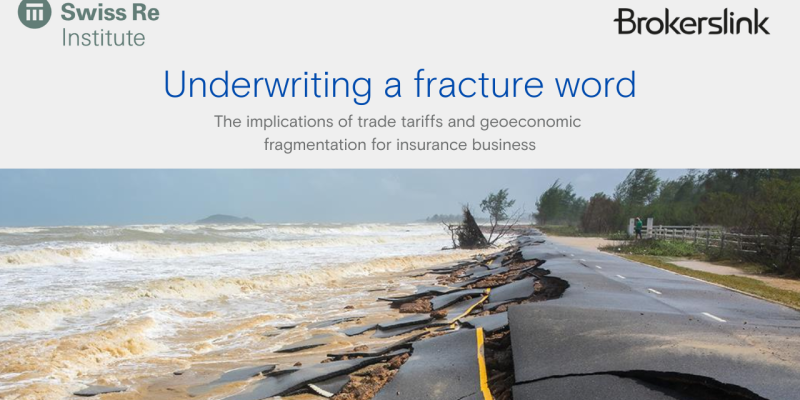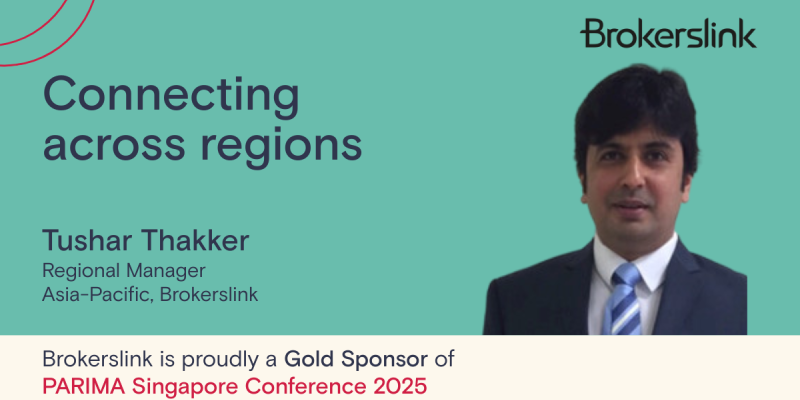During the PARIMA Singapore Conference 2025, Chief Technical Officer at RCG, and Brokerslink Risk Management Practice member, Javier Mirabal, will join an important panel discussion titled: ‘Business Continuity Management System: Framework and Best Practices’.
Business continuity has certainly risen up the risk management agenda over the past few decades. As risks evolve and become more globalised and interconnected, there is a greater imperative to take a more strategic approach to business continuity practices.
Before the conference, Brokerslink spoke to Javier to learn about the evolution of business continuity, the changing role of risk professionals and why business continuity is now synonymous with survival.
Javier, why is it so important to be talking about business continuity?
The nature of business continuity has changed a lot since I began my risk management career. Back then, the practice was largely insurance-driven and focused only on financial strength. Risk analysis comprised of checking past financial statements and projections to make informed decisions, and rarely (if ever) took into account any external factors. As the world became more globalised in the 1990s, businesses started to look more deeply at how they could protect their profits, taking into account financial architecture, quality management systems and other critical process architecture.
Companies only really started looking at external risk factors around the mid-2000s, following several well-publicised catastrophe events and the financial crash of 2008. It was here that risk professionals started to recognise the serious risk posed by events outside of their control. The COVID pandemic forced further acceleration in the concept of business continuity, as technological adoption and digital transformation gave rise to further complex and interconnected risks.
We only need to look at the significant impact of recent high-profile events, the AWS outage, for example, or the power outages in Iberia earlier in the year, to see that a multi-faceted approach to business continuity is essential for modern businesses.
Do you think most businesses understand how essential this approach is?
A common soundbite in boardrooms and annual reports is that "business continuity and resilience are part of our DNA." But what does this really mean in practice?
At its core, DNA is information. Therefore, a true measure of resilience lies in how effectively information flows through every part of a company: its people, processes, and its technology. It's no longer enough to rely on financial checks and balances alone. A business continuity mindset must permeate the entire organisation. Just as Darwin's Theory of Evolution outlines that the transfer and improvement of information is essential for survival, the same principle applies to securing a company's future.
I believe companies now grasp this principle better than ever before. However, the compound effects of digital transformation, both positive and negative, cannot be overstated. Risk professionals must weave this vital digital strand into their business continuity frameworks alongside financial security and critical process architecture. The ability to identify, monitor, and mitigate digital disruption is no longer optional; it's fundamental to organisational survival.
Can businesses ever prevent interruption from internal or external forces?
Absolutely not! Interruption is a fact of life, whether it’s a system failure, physical damage to a business property or key employees leaving, all businesses will at some point experience interruption. But disruption? That’s a bigger issue. Not all interruptions will lead to disruption and loss of productivity or profit; the difference lies in the strength of their business continuity planning.
I like to use the analogy of a spring. A spring can compress and extend repeatedly, always returning to form, until you stretch it beyond its capacity. Push too far, and it loses its ability to bounce back permanently. Companies operate the same way, interruptions test resilience but allow recovery, whereas disruptions exceed the resilience threshold, and the company may never recover. A strong business continuity framework gives a business the resilience and flexibility to withstand a greater force without breaking, but it has to be built on those key pillars: financial strength, process, and digital architecture.
What can risk professionals do today to strengthen their approach to business continuity?
This was a topic covered at length at the Risk Managers Forum Jorge Luzzi that was held during the Brokerslink Global Conference earlier in the month. Luis Lancha Vázquez, president of Spanish risk management association Agers suggested that risk professionals need to take a broader, more holistic approach, and FERMA’s President Charlotte Hedemark agreed, saying that practitioners must ensure they work on their softer skills and develop a harmonised risk culture, to become true cross-functional operators and strategic partners.
I agree with these esteemed speakers. Risk professionals today are facing their greatest challenge yet; we’ve never existed at a time when risk was so prevalent or relentless. Threat comes from all sides of a business, internal, external, near and far, and risk managers must now develop a comprehensive 360-degree picture of their organisation. They can no longer work in silos, instead, they must traverse the company and develop a deeper understanding of all business functions and how they operate, from the factory floor to finance to HR.
But they cannot (and should not) do this alone. They should operate as a vital part of a multi-disciplinary group with representatives from across the business, learning the language of each business segment and thinking outside the box to help their team mates to identify and manage risk.
Lastly, can you tell us why PARIMA Singapore is so important to attend?
Information is everything. We cannot assume that we know how our clients and partners in different areas of the world approach risk. We must instead take the time to visit other countries, speak to risk professionals and learn from them. Only by sharing this knowledge between ourselves will we develop the best understanding and best practice in managing the risks we all face. PARIMA is an essential event for us to deepen our understanding of what challenges risk professionals are facing in the Asia Pacific region, and the measures they are taking to tackle them. I’m looking forward to learning more from my colleagues on 30th October.
Brokerslink is a Gold sponsor of the PARIMA Conference Singapore on 29–30 October 2025. Visit booth G5 to meet with Javier and other risk and insurance experts from across the region. We’ll see you there!






